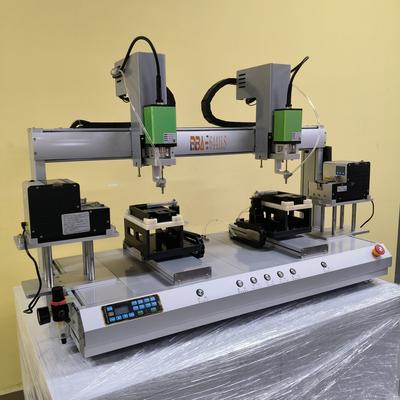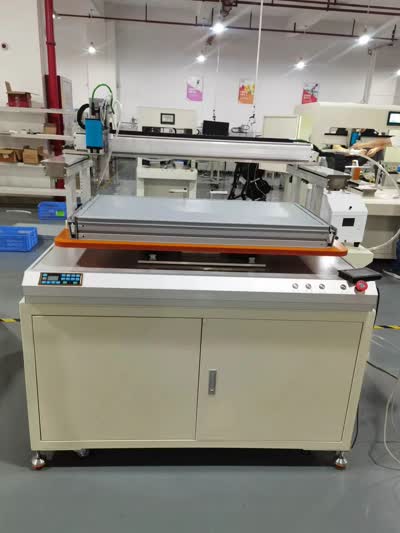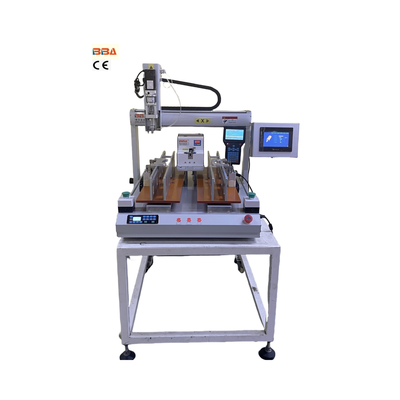Automotive Screw Locking Automation | Assembly Systems & Applications

| Product Name | Applicable industries |
| Inline Screw Locking System | Industrial Control Panel Assembly |
Automotive Industry Applications of Screw Locking Automation
The automotive manufacturing sector is defined by its relentless pursuit of precision, efficiency, and unwavering quality. In this high-stakes environment, every component, from the smallest electronic sensor to the most robust engine block, must be assembled with absolute reliability. One critical process that has undergone a significant technological transformation is screw fastening. The manual application of screws, once a common practice, is increasingly being replaced by sophisticated screw locking automation systems, revolutionizing production lines and setting new standards for excellence.
Enhancing Production Line Efficiency and Throughput
Modern automotive assembly lines are marvels of logistical coordination, where every second counts. Automated screw locking systems are integral to maintaining the relentless pace of production. These robotic and fixed automated units can operate continuously with minimal downtime, drastically reducing cycle times compared to manual screw driving. They are programmed to perform repetitive tasks with immense speed and consistency, eliminating the variability of human operators. This not only accelerates the overall assembly process, allowing manufacturers to meet demanding production targets but also optimizes labor allocation. Skilled technicians can be redeployed to more complex, value-added tasks such as quality inspection and system troubleshooting, thereby increasing overall operational intelligence and productivity.
Guaranteeing Uncompromising Quality and Consistency
Perhaps the most significant advantage of screw locking automation lies in its ability to ensure flawless and repeatable results. These advanced systems are equipped with precise torque and angle control sensors, guaranteeing that every screw is driven to its exact specification. This is paramount for critical applications such as:
- Engine and Powertrain Assembly: Where improper torque on a single screw can lead to leaks, vibrations, or catastrophic component failure.
- Electronic Control Units (ECUs) and Sensors: Where overtightening can damage delicate circuit boards, and undertightening can lead to connection failures.
- Braking and Safety Systems: Where the integrity of every fastened component is non-negotiable for vehicle safety.
- Interior and Chassis Components: Ensuring squeak- and rattle-free operation by applying consistent, correct clamping force.
Furthermore, these systems are integrated with data tracking software, creating a digital record for every screw fastened. This provides complete traceability, which is invaluable for quality audits and root cause analysis in the rare event of a defect.
Improving Ergonomics and Worker Safety
The manual driving of screws, especially in overhead or hard-to-reach positions, is a known source of repetitive strain injuries (RSIs) among assembly line workers. These injuries can include carpal tunnel syndrome, tendonitis, and chronic back pain. Automated screw locking systems effectively mitigate these risks by taking over the physically demanding tasks. Robots can be positioned at any angle and can access confined spaces without fatigue, significantly enhancing workplace ergonomics. This commitment to safety not only protects valuable employees but also reduces absenteeism and associated healthcare costs, contributing to a more sustainable and humane work environment.
Driving Cost Reduction and ROI
While the initial investment in automation technology is considerable, the long-term return on investment (ROI) is compelling. The dramatic reduction in assembly errors directly translates into lower scrap and rework costs. The prevention of a single recall due to a fastening failure can justify the entire system's cost. Additionally, the high speed and efficiency of automated systems lower the cost per unit assembled. Reduced dependency on manual labor for repetitive tasks also leads to significant savings in training and potential compensation claims. For automotive manufacturers, screw locking automation is not merely an expense but a strategic investment in building a more resilient, profitable, and high-quality manufacturing operation.
In conclusion, the integration of screw locking automation is no longer a luxury but a necessity in the competitive automotive industry. It is a key enabler for achieving the levels of precision, reliability, and efficiency required to manufacture today's complex vehicles. As the industry advances towards electric and autonomous vehicles, with their even greater reliance on sensitive electronics and precise mechanical assemblies, the role of automated fastening will only become more critical, solidifying its position as a cornerstone of modern automotive manufacturing.


